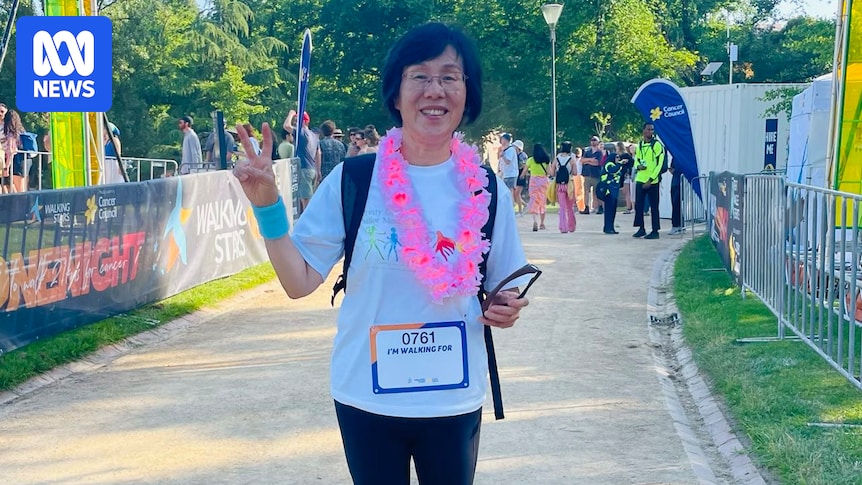
When Melbourne resident Xie Min was diagnosed with breast cancer in her forties, she was taken aback. The diagnosis seemed premature for what she considered a relatively young age. “My heart sank,” she recalled. “How should I proceed with treatment? What would the outcome be? My mind was in turmoil.”
Following an unsuccessful lumpectomy, Ms. Xie underwent a full mastectomy. “Because it [the cancer] was early stage, I didn’t need radiotherapy or chemotherapy, and I recovered very well after the operation,” she said. Nearly two decades later, Ms. Xie is advocating for younger women, particularly those from Chinese backgrounds, to participate in breast screening programs.
Doctors Recommend Early Screening for Chinese Australians
Australian oncologist Dr. Stephen Birrell has observed that ethnic Chinese women tend to develop breast cancer earlier than other Australians. “They get it at a young[er] age than in the West,” he noted. His observations are echoed by Melbourne-based breast and endocrine surgeon Dr. Suat Li Ng, who primarily treats patients of Chinese descent. “My patient demographics, where breast cancer is diagnosed, are usually in the 30s and 40s,” Dr. Ng stated.
Research conducted in both China and Australia supports these observations. A study of breast cancer in women treated at Eastern Health in Victoria in 2020 found that Australian Chinese women diagnosed with breast cancer were, on average, about six years younger than their counterparts. The Royal Australasian College of Surgeons summarized that possible reasons for these differences might include diet, lifestyle, and body mass index (BMI).
“Language barriers should also be addressed, as well as improving knowledge around breast cancer with these patients and how they view treatment,” the summary stated.
Dr. Ng added that Asian women often have denser breast tissue, which necessitates the use of 3D or contrast mammograms and ultrasounds. “With the denser breast women, the standard 2D mammogram that we do with breast screening generally can’t see through the density,” she explained. “Hence you might miss cancers.”
Addressing Barriers to Breast Cancer Screening
Despite the increased likelihood of developing breast cancer at a younger age, Chinese Australian women face numerous barriers to screening. According to BreastScreen Victoria, culturally and linguistically diverse (CALD) women are generally less likely to participate in breast cancer screening. From July 2022 to June 2024, only 38.9% of Victorians from CALD backgrounds participated in breast cancer screening, compared to the state average of 51.9%.
Dorothy Yiu, president of the Chinese Cancer and Chronic Illness Society of Victoria (CCCIS), cited language barriers, a lack of understanding of the benefits, and embarrassment as reasons for reluctance to undergo breast screening. “It’s good to address these barriers and focus on the benefits of screening,” Ms. Yiu emphasized. “Education is the best strategy to inform Chinese women about early detection of breast cancer.”
Further supporting this, a 2022 study by the University of Sydney found that the most common barrier to mammography among Chinese Australian women was the perception that doctors did not recommend it. “GPs [general practitioners] are essential for encouraging women to have a CBE [clinical breast exam], especially those who are not yet invited to mammography screening,” the study’s authors recommended.
Growing Demand for Culturally Appropriate Support
In New South Wales, Eric Yeung, president of CanRevive, a support organization for Chinese-speaking cancer patients, noted a similar reluctance towards breast cancer screening. “Younger women often think they’re too young for breast cancer and focus on work or family instead,” Mr. Yeung said. “Middle-aged and older women may hold fatalistic beliefs (‘if it’s my fate, it’s my fate’) or avoid screening out of fear.”
He also highlighted cultural barriers, such as the reluctance to expose their bodies during mammograms, cultural beliefs, taboos, and a sense of guilt. “Cancer remains a taboo topic; some patients hide their diagnosis or delay seeking help,” Mr. Yeung explained. “Due to mistrust and parallel care, some patients turn to overseas doctors or traditional Chinese medicine first, often without informing their oncologist.”
The number of breast cancer patients assisted by CanRevive has nearly doubled over the past two years, rising from 39 to 73 people.
This increase underscores the growing demand for culturally appropriate cancer support services within Chinese-speaking communities. Language plays a crucial role in patient care, as Dr. Ng, who speaks multiple languages, noted. “If you are being diagnosed with breast cancer, there’s a lot of anxiety that goes with the diagnosis, plus all the medical jargon, the medical terminology that scares people,” she said.
Earlier this month, Dr. Ng hosted a workshop for breast cancer patients, emphasizing holistic care during recovery. “It’s really just to empower the women with more knowledge about living their life, and also to help them connect with other women who have been through cancer as well,” she explained.
Reflecting on her own experience, Xie Min has since embraced activities such as calligraphy, yoga, and hiking, and has actively participated in breast cancer awareness campaigns. Looking back nearly two decades, she is grateful for the support from family and friends and encourages women to prioritize their health and that of their friends.






